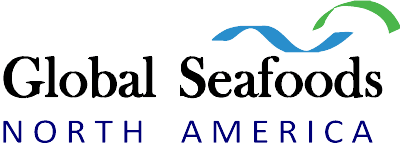Seafood Market Watch: Industry Insights

Seafood Market Watch
The seafood market is a dynamic and rapidly growing industry, driven by global consumer demand, sustainability efforts, and innovative fishing practices. In this comprehensive analysis, we explore the current trends shaping the seafood market, challenges facing the industry, and opportunities for future growth.
Whether you're a seafood enthusiast, business owner, or simply curious about the industry, this article will provide valuable insights to help you navigate the complexities of the seafood market.
The Current State of the Seafood Market
The global seafood market has seen substantial growth over the past decade. Valued at approximately $110 billion in 2023, it is projected to reach $138 billion by 2030, according to Allied Market Research. This growth is driven by increased consumer awareness of seafood's health benefits and a rising demand for sustainable options.
1. Growing Demand for Healthy Protein Sources
Consumers worldwide are turning to seafood as a healthier protein alternative to red meat. Fish like salmon, tuna, and cod are not only rich in high-quality protein but also packed with essential nutrients such as omega-3 fatty acids, vitamins, and minerals.
2. Rising Popularity of Sustainable Practices
Sustainability has become a key focus in the seafood industry. Certified sustainable seafood, such as those with the MSC or ASC labels, has gained significant consumer trust. This shift is critical in addressing overfishing and ensuring the health of marine ecosystems.
Key Trends Shaping the Seafood Industry
1. The Rise of Aquaculture
Aquaculture, or fish farming, now accounts for more than 50% of global seafood production. This method offers a sustainable solution to meet growing demand while reducing pressure on wild fish populations.
According to the Food and Agriculture Organization (FAO), innovations in aquaculture technology are improving efficiency and reducing environmental impact.
Popular Farmed Species:
- Salmon
- Shrimp
- Tilapia
2. Increased Focus on Traceability
Consumers want to know where their seafood comes from. Blockchain technology is being used to improve traceability, ensuring that seafood products are sustainably sourced and free from illegal fishing practices.
3. Growth in Online Seafood Sales
E-commerce has revolutionized the way people buy seafood. Online platforms, like Global Seafoods, allow consumers to access high-quality seafood with the convenience of home delivery.
Challenges Facing the Seafood Market
While the seafood market is thriving, it faces several challenges that require attention:
1. Overfishing
Overfishing remains a significant concern. The World Wildlife Fund (WWF) reports that nearly 33% of fish stocks are overexploited. Sustainable fishing practices and consumer awareness are crucial in combating this issue.
2. Climate Change Impact
Rising ocean temperatures and acidification threaten marine life and disrupt ecosystems. This has implications for both wild fisheries and aquaculture operations.
3. Price Volatility
Fluctuating seafood prices can affect market stability. Factors such as fuel costs, supply chain disruptions, and natural disasters contribute to price variability.
Opportunities for Growth
1. Innovative Seafood Products
Value-added seafood products, such as pre-marinated fillets or ready-to-eat options, are gaining popularity among busy consumers.
2. Plant-Based Seafood Alternatives
The rise of plant-based diets has led to innovations in seafood alternatives. Companies are creating plant-based shrimp, tuna, and even salmon to cater to this growing market segment.
3. Expanding to Emerging Markets
Asia-Pacific, Latin America, and Africa are emerging as key markets for seafood consumption. These regions offer immense growth potential due to their large populations and increasing disposable incomes.
Consumer Tips for Navigating the Seafood Market
1. Look for Certifications
Choose products with certifications like MSC, ASC, or BAP to ensure sustainability and quality.
2. Buy Fresh and Local
Whenever possible, support local seafood markets to enjoy the freshest options and reduce the carbon footprint associated with transportation.
3. Embrace Online Shopping
Explore platforms like Global Seafoods for convenient access to premium seafood products, including Red Caviar and King Crab.
FAQs About the Seafood Market
Q1: How can I ensure I’m buying sustainable seafood?
Look for certifications like MSC, ASC, or BAP. These labels guarantee responsible sourcing and sustainable practices.
Q2: Is farmed seafood safe to eat?
Yes, when sourced from certified farms. Certifications like ASC and BAP ensure high standards of safety and sustainability.
Q3: What’s driving the growth of the seafood market?
Rising consumer demand for healthy protein, sustainability initiatives, and the expansion of aquaculture are major factors.
Conclusion
The seafood market is evolving rapidly, driven by consumer demand for health-conscious choices and sustainable practices. While challenges like overfishing and climate change persist, innovations in aquaculture, traceability, and value-added products offer exciting opportunities.
For premium, certified seafood products, visit Global Seafoods. Enhance your seafood knowledge and cooking skills with our YouTube channel.
Shop High-Quality Seafood:
Stay informed, eat sustainably, and enjoy the finest seafood the market has to offer!
Also in News

How to Make Sea Bream Sushi With Dry-Aged Tuna & Crab Roll — Step-by-Step With Chef Joshua
A complete guide to making Sea Bream sushi at home, including filleting, curing, slicing, and building a Dry-Aged Tuna & Crab sushi roll. Chef Joshua shares professional tips for restaurant-quality results.

The Boiled Crab in Popular Culture: From Cajun Cuisine to Trendsetting Restaurant Phenomenon
From spicy Cajun-inspired seafood boils to hands-on dining experiences, The Boiled Crab has left a unique mark on popular culture. Discover its cultural roots and culinary influence.

Boiled Crab for Game Night: Everything You Need for a Perfect Seafood Party
Take your game night to the next level with a Boiled crab party. Learn the best recipes, cooking tips, and hosting hacks for a memorable seafood feast.
